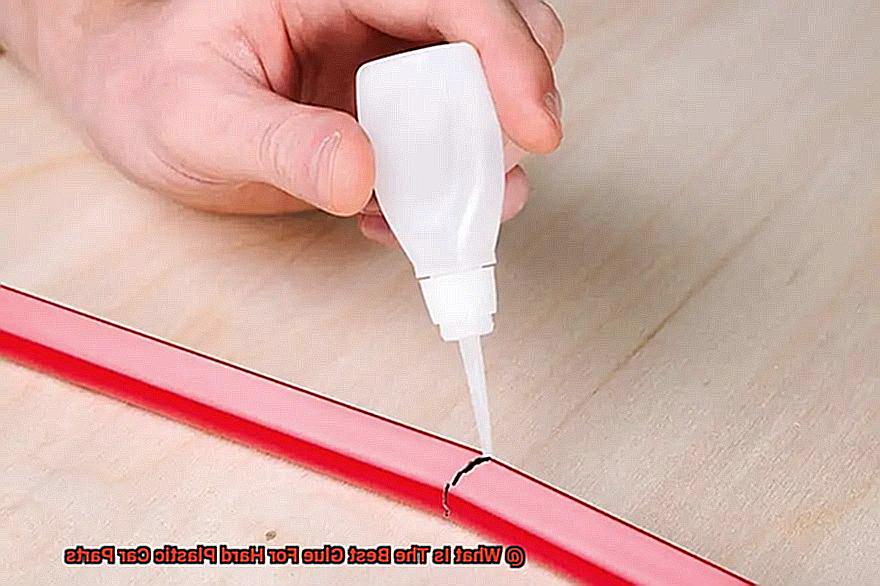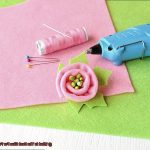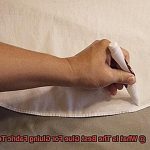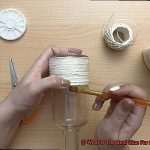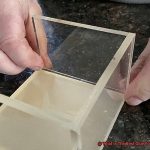When it comes to our beloved four-wheeled companions, we refuse to settle for anything less than perfection. Whether you’re tackling a minor fix or a full-blown restoration, finding the best glue for hard plastic car parts is absolutely essential for long-lasting repairs. But with countless options out there, it’s easy to feel like you’re navigating a maze without a map.
But fret not, fellow car enthusiasts. In this all-inclusive guide, we’ll shed light on the crème de la crème of glues specifically designed for hard plastic car parts. We’ll arm you with the knowledge you need to make informed decisions and tackle any plastic-related issues that come your way – from cracked bumpers to loose interior trim pieces and everything in between.
With factors like strength, heat resistance, ease of application, and durability to consider, choosing wisely will ensure your car stays stunning and functional even on the toughest roads.
So buckle up and join us on this thrilling journey as we delve into the ideal adhesive solutions that will give your hard plastic car parts the tender loving care they deserve. Get ready to hit the road with confidence – because now you’ll have all the answers. Let’s dive right in.
What is Hard Plastic?
Contents
Hard plastic, a remarkable material, plays an indispensable role in the automotive industry. Its inflexible nature and exceptional durability make it an ideal choice for car parts that demand strength and stability. In this comprehensive guide, we will explore the captivating world of hard plastic, uncover its various types, and provide insights on selecting the optimal glue for effectively bonding hard plastic car parts.
Understanding Hard Plastic:
Hard plastic is a robust polymer known for its remarkable ability to retain its shape and structure even under immense pressure. Unlike its flexible counterpart, soft plastic, hard plastic boasts rigidity and durability that are highly sought after in the automotive sector. Its exceptional strength and resistance to harsh conditions have made it a staple material in the production of car parts.
Types of Hard Plastic:
The realm of hard plastic encompasses a diverse array of materials, each possessing unique characteristics and applications within the automotive industry. Let us delve into some prominent types:
- Polypropylene (PP): Known for its tensile strength, PP is often employed in manufacturing battery casings, bumpers, and interior components such as dashboard panels.
- Polyethylene Terephthalate (PET): PET, recognized for its transparency and resistance to impact, finds utility in the creation of automotive bottles, electrical connectors, and even seat belts.
- Polyvinyl Chloride (PVC): PVC’s remarkable versatility has paved the way for its use in manufacturing car interiors, wire coatings, and sealants due to its flame resistance and adaptability.
- Polycarbonate (PC): PC’s exceptional impact resistance and clarity make it an excellent choice for producing headlights, sunroofs, and instrument panels.
Choosing the Right Glue:
Selecting the appropriate adhesive is key when it comes to effectively bonding hard plastic car parts. Here are three popular options:
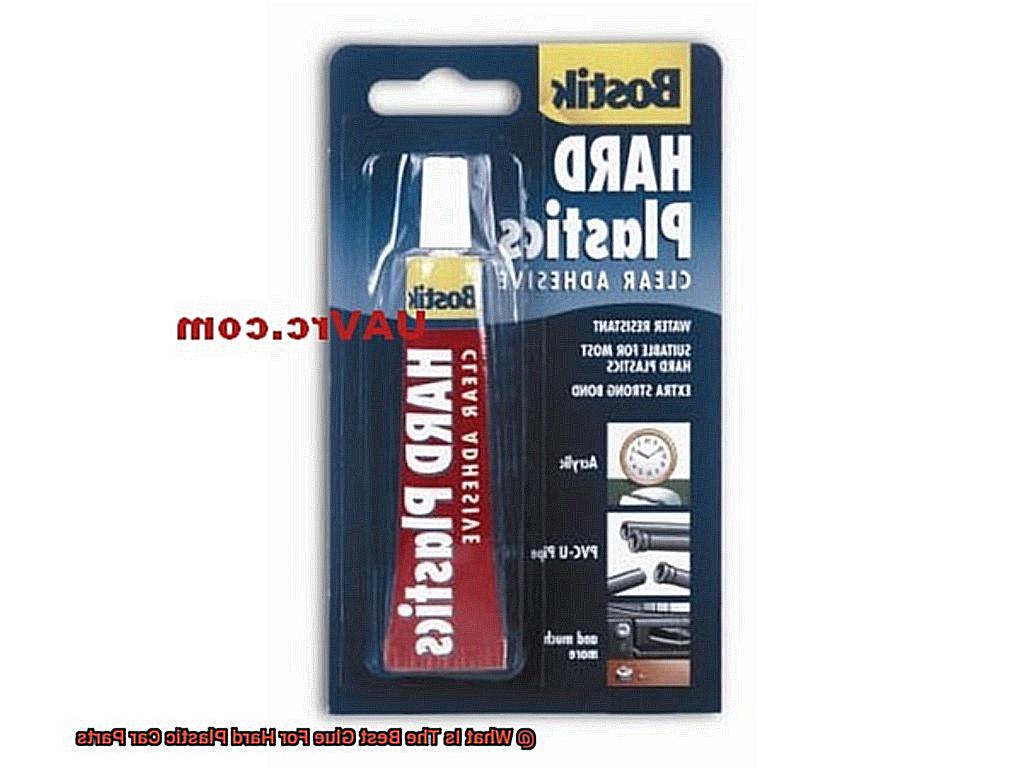
- Epoxy Adhesive: Renowned for its formidable bond and exceptional durability, epoxy adhesive exhibits resistance to moisture, chemicals, and high temperatures. The two-part composition, consisting of resin and hardener, creates a bond capable of withstanding the stresses and vibrations experienced within a vehicle.
- Cyanoacrylate Adhesive: Famously known as super glue, cyanoacrylate bonds swiftly and securely to various surfaces, including hard plastics. However, it is essential to opt for a cyanoacrylate adhesive specifically formulated for plastic bonding to ensure optimal results.
- Polyolefin Adhesive: Certain types of hard plastics, such as polypropylene or polyethylene, necessitate specialized polyolefin adhesives. These plastics possess low surface energy, making them challenging to bond using traditional adhesives. Polyolefin adhesives contain chemical additives that facilitate bonding with these specific plastics.
Considerations When Choosing the Best Glue for Hard Plastic Car Parts
Choosing the best glue for hard plastic car parts requires careful consideration of several factors. First and foremost, it is crucial to identify the specific type of plastic you are working with. Not all glues are compatible with all types of plastic, so choosing a glue specifically designed for the type of plastic you are using is essential.
Strength and durability are also critical considerations. Car parts are subjected to various stresses and vibrations, so you need a glue that can withstand these conditions. Look for glues labeled as “high strength” or “industrial strength” with excellent adhesive properties to ensure a secure bond.
Drying time is another important factor, especially when working on car parts. Waiting for hours for the glue to dry is impractical and time-consuming. Opt for glues that dry quickly, allowing you to move forward with your project without unnecessary delays.
The glue’s resistance to moisture and temperature fluctuations is vital in the automotive environment. Cars are exposed to different weather conditions, from extreme heat to cold and moisture. Choose a glue that can withstand these conditions without losing its adhesive properties.
Ease of application is also worth considering. Look for glues that come with an easy-to-use applicator or nozzle, allowing you to apply the glue precisely and evenly on the desired surface. This ensures a strong bond between the plastic parts.
Furthermore, consider compatibility with other materials if you need to attach plastic car parts to metal or rubber components. The glue should be compatible with these materials as well, ensuring a secure bond between different components.
Lastly, prioritize safety and environmental impact. Select glues that are non-toxic and do not emit harmful fumes or chemicals during application. This protects the health of those involved in the project and creates a safe working environment.
Epoxy Adhesive
When it comes to bonding hard plastic car parts, you need an adhesive that can withstand the rigors of the road. Enter epoxy adhesive – a powerful and reliable solution that ensures your car parts stay firmly in place. As an expert on this topic, I’m here to guide you through the process of using epoxy adhesive like a seasoned pro.
Surface Preparation:
Before diving into the world of epoxy adhesive, proper surface preparation is crucial. Begin by ensuring that both surfaces to be glued are immaculately clean, bone dry, and free from any dirt, grease, or oil. A quick roughening with sandpaper or a file will also amplify the adhesion.
Mixing and Application:
Epoxy adhesive is a dynamic duo made up of two components – resin and hardener – which must be mixed together in precise proportions. Follow the manufacturer’s instructions meticulously to achieve the perfect blend. Once mixed, apply a thin layer of the adhesive onto one surface using a brush or spatula. Similarly, coat the other surface with a thin layer as well.
Bonding:
With both surfaces coated, press them together firmly. Applying pressure helps forge a stronger bond. For added assurance, use clamps or any other means to hold the parts in place until the adhesive sets. Clear away any excess adhesive that may squeeze out during the process.
Curing Time and Strength:
Epoxy adhesives require time to cure and reach their zenith of strength. The curing time varies depending on the specific product used, so consult the manufacturer’s instructions. Resist rushing the process as it could jeopardize the bond’s integrity.
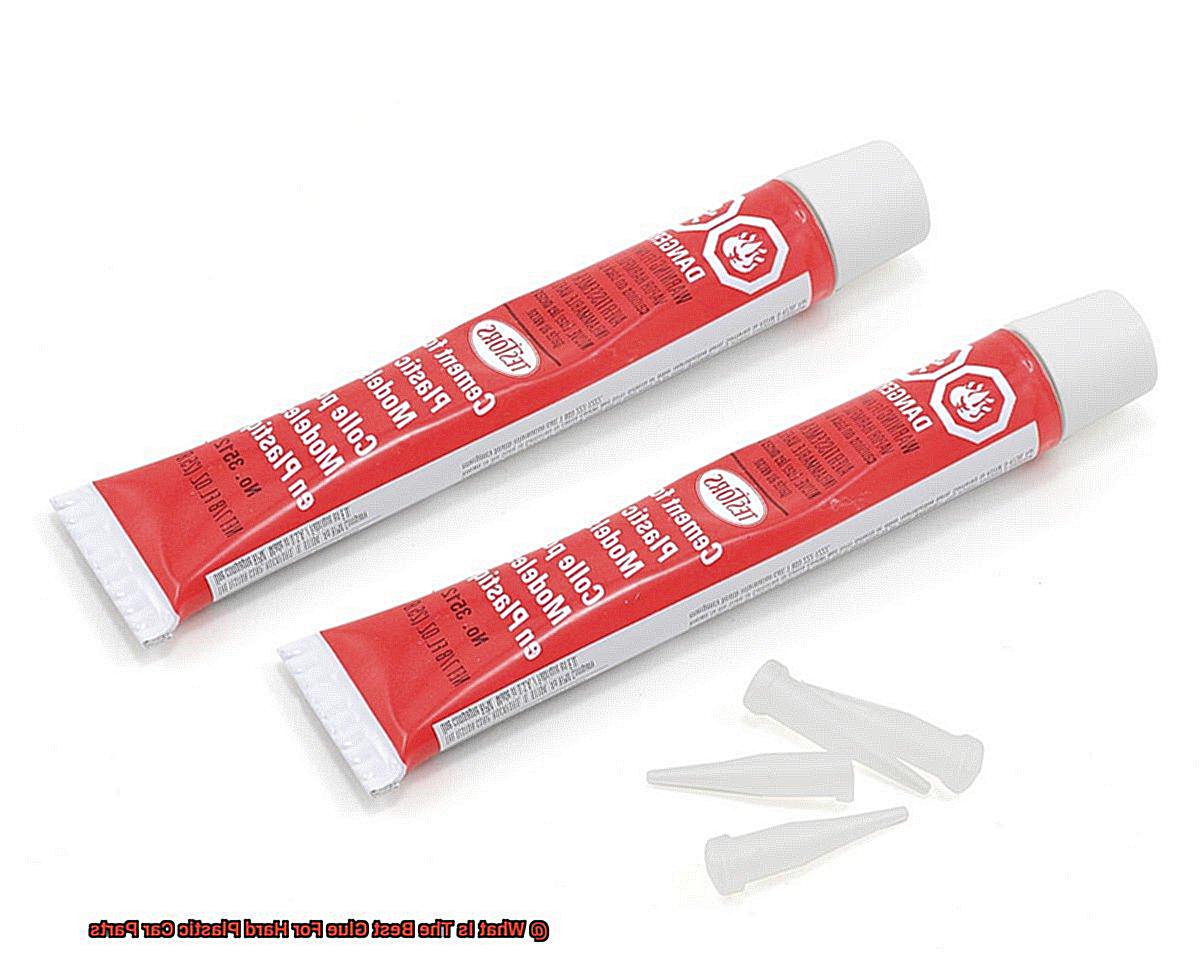
Benefits and Considerations:

Once fully cured, epoxy adhesive offers exceptional resistance to heat, chemicals, and moisture – perfect for various automotive applications. However, bear in mind that epoxy may not bond well with all types of hard plastics, especially those with low surface energy like polyethylene or polypropylene. In such cases, specialized adhesives formulated for these plastics are recommended.
Cyanoacrylate Adhesive (Super Glue)
First and foremost, it dries in a flash. While other adhesives take ages to cure, super glue sets within seconds or minutes. So, if you’re in a hurry to fix that broken bumper or trim piece, this is the adhesive for you.
But that’s not all. Cyanoacrylate adhesive is like a chameleon – it can bond various types of plastics commonly found in car parts. Whether it’s ABS, PVC, polycarbonate, or polypropylene, this adhesive can handle them all. That means you can use it to repair anything from bumpers to interior panels and even headlights.
Now, here’s a pro tip – choose the right formulation of super glue for your specific needs. Some variants are specially designed for plastics and offer enhanced bonding strength and resistance to temperature changes, vibrations, and moisture. This ensures a reliable and long-lasting bond that can withstand the harsh conditions your car may encounter.
Applying cyanoacrylate adhesive is a breeze. Just make sure the surfaces you’re bonding are clean and dry. Apply a thin layer on both surfaces, press them together firmly, and hold them in place for a few minutes. And voila. Your hard plastic car parts are securely bonded.
However, like any superhero, super glue does have its limitations. It may not be suitable for bonding large or heavy components that require significant structural strength. In those cases, mechanical fasteners or other types of adhesives might be a better option.
Polyolefin Adhesives
Polyolefin adhesives are the secret behind seamlessly fixing broken plastic car parts. These special glues are formulated to bond hard plastic car parts made from polyolefin materials such as polypropylene and polyethylene. Polyolefins are commonly used in the automotive industry because of their durability, strength, and resistance to chemicals and impact. However, bonding these materials can be challenging due to their low surface energy and non-polar nature.
Polyolefin adhesives are designed to overcome these challenges by increasing the surface energy of the plastic. They contain additives that allow the adhesive to wet out and form a strong bond. Typically, these adhesives come in two-component formulations, consisting of a resin and an activator or primer.
The resin component of polyolefin adhesives is a flexible polymer that provides excellent adhesion properties. It flows into the microscopic irregularities on the plastic surface, creating mechanical interlocking for improved bond strength. The activator or primer component chemically modifies the surface of the polyolefin, further enhancing its adhesion properties.
Two popular types of polyolefin adhesives are structural acrylic adhesive and cyanoacrylate adhesive. Structural acrylic adhesives offer high bonding strength, impact resistance, and flexibility. They are commonly used in automotive applications where a strong and durable bond is required. Cyanoacrylate adhesives, also known as super glue, provide instant adhesion without the need for mixing or priming. However, they may not be suitable for all automotive applications due to their lower resistance to heat and chemicals.
Proper surface preparation is crucial when using polyolefin adhesives. The plastic surface should be cleaned and degreased to remove any contaminants that could interfere with adhesion. Some polyolefin adhesives may require the use of a primer or activator for enhanced bonding performance. Following the manufacturer’s instructions for application and curing times is essential.
Surface Preparation for Gluing Hard Plastic Car Parts
Surface preparation is a crucial step in gluing hard plastic car parts to ensure a strong and durable bond. By following these steps, you can restore your car’s beauty and fix those unsightly cracks and broken pieces.
- Cleaning: Start by cleaning the plastic parts thoroughly to remove any dirt, dust, or grease that may hinder the adhesive’s ability to bond effectively. Use a mild detergent or a specialized plastic cleaner designed for automotive use. Rinse the parts with water and make sure they are completely dry before proceeding.
- Roughening the surface: This step is essential as it provides more surface area for the adhesive to grip onto, resulting in a stronger bond. There are several methods to achieve this:
- Sanding: Gently sand the surface using fine-grit sandpaper or abrasive pads in circular motions. Be cautious not to apply too much pressure to avoid damaging the plastic.
- Scoring: For smooth and glossy plastics that are difficult to sand effectively, use a sharp knife or a scoring tool to create small cuts or grooves on the surface.
- Liquid primer: Some adhesives work best with the help of a liquid primer specifically formulated for plastic surfaces. These primers contain chemicals that slightly dissolve and soften the plastic, allowing for better adhesive penetration and a stronger bond. Follow the manufacturer’s instructions and ensure the primer is completely dry before moving on.
- Fit and alignment: Before applying glue, ensure that the parts fit together properly. Align them correctly and make any necessary adjustments or modifications beforehand.
- Choosing the right adhesive: There are two popular types of polyolefin adhesives suitable for hard plastic car parts:
- Structural acrylic adhesive: This adhesive offers high bonding strength, impact resistance, and flexibility, making it perfect for automotive applications where strength and durability are crucial.
- Cyanoacrylate adhesive (super glue): This adhesive provides instant adhesion without priming requirements. However, it may not be suitable for all automotive applications, as it may not have the same resistance to heat and chemicals as structural acrylic adhesive.
Remember to read and follow the instructions provided by the adhesive manufacturer, as not all adhesives require surface roughening or priming.
Manufacturer Recommendations
When it comes to repairing hard plastic car parts, selecting the right glue is essential for a strong and long-lasting bond. With a wide range of options available on the market, it can be challenging to determine which one to choose. However, the key lies in following the manufacturer’s recommendations.
Car manufacturers invest significant time and resources in researching and testing adhesives that are compatible with the plastic components of their vehicles. They take into account various factors such as the type of plastic used, temperature resistance, impact resistance, and compatibility with other materials. By adhering to their recommendations, you can have confidence in using an adhesive specifically designed for your car.
For instance, let’s say you need to fix a hard plastic bumper. The manufacturer may suggest a structural acrylic adhesive for maximum strength and durability. This adhesive is specially formulated to create a long-lasting bond that can withstand the daily demands of driving, including exposure to extreme temperatures and impacts. By following the manufacturer’s recommendation, you can ensure that your repair will stand the test of time.
In addition to providing recommendations, manufacturers often collaborate with adhesive manufacturers to develop products that meet the stringent requirements necessary for automotive applications. These specially formulated adhesives are designed to deliver optimal performance and reliability, giving you peace of mind knowing that your repair is built to last.
Not only does following the manufacturer’s recommendations guarantee a strong bond, but it can also save you time and money in the long run. Using an adhesive not recommended by the manufacturer could result in adhesive failure, leading to costly repairs or even safety hazards. By utilizing the recommended adhesive, you can avoid these issues and have confidence in the quality of your repair.
BNCfUUNnsno” >
Conclusion
In conclusion, selecting the perfect adhesive for gluing hard plastic car parts is absolutely crucial if you want a bond that will withstand the test of time. Throughout this comprehensive guide, we have delved into the world of hard plastic used in car parts and uncovered the ideal adhesives for each type.
When it comes to general hard plastics like ABS, PVC, and polycarbonate, you can’t go wrong with epoxy adhesive. This powerhouse adhesive boasts unparalleled strength, durability, and resistance to heat, chemicals, and moisture. However, it may struggle to bond with low-surface-energy plastics such as polyethylene or polypropylene.
For those moments when speed is of the essence and you need an instant fix, turn to cyanoacrylate adhesive (super glue). This lightning-fast drying adhesive can bond a wide range of plastics commonly found in car parts. Just be sure to select a variant specifically designed for plastic bonding.
If your hard plastic car parts are crafted from polyolefin materials like polypropylene or polyethylene, specialized polyolefin adhesives are an absolute must. These adhesives contain additives that boost surface energy and enable robust bonds with these notoriously challenging materials.
Regardless of which adhesive you opt for, proper surface preparation is paramount. Thoroughly clean the surfaces and roughen them if necessary to enhance adhesion. Follow the manufacturer’s instructions diligently when it comes to application and curing times in order to achieve optimal results.
Lastly, it’s imperative to take into account the recommendations provided by the manufacturer when selecting an adhesive. Car manufacturers invest significant resources into testing adhesives that are compatible with their vehicle’s plastics. By adhering to their suggestions, you can rest assured knowing that your bond will meet the rigorous requirements of automotive applications.
So next time you encounter broken or cracked plastic car parts, rely on this guide to discover the best glue tailored precisely to your needs.

